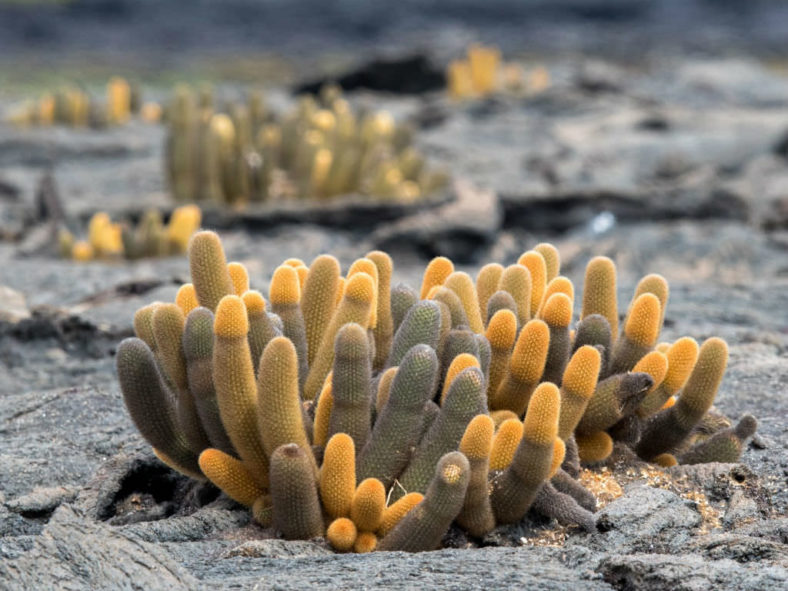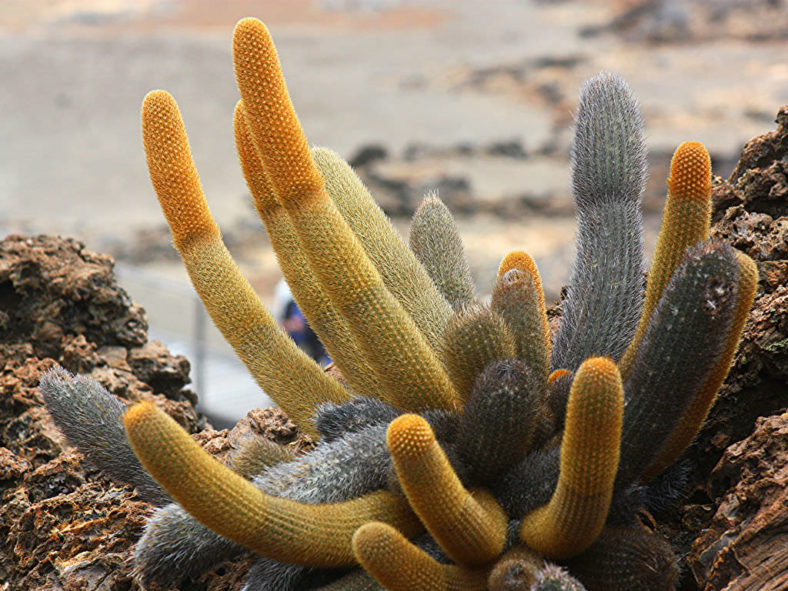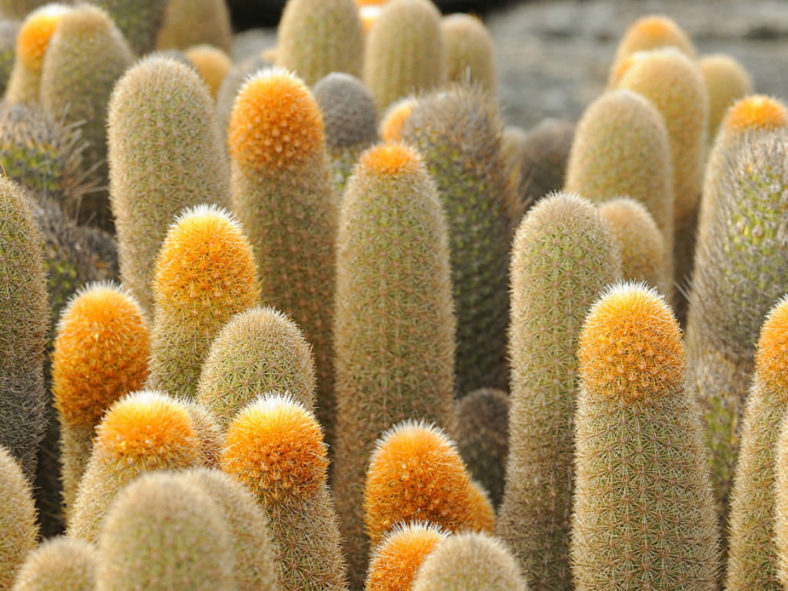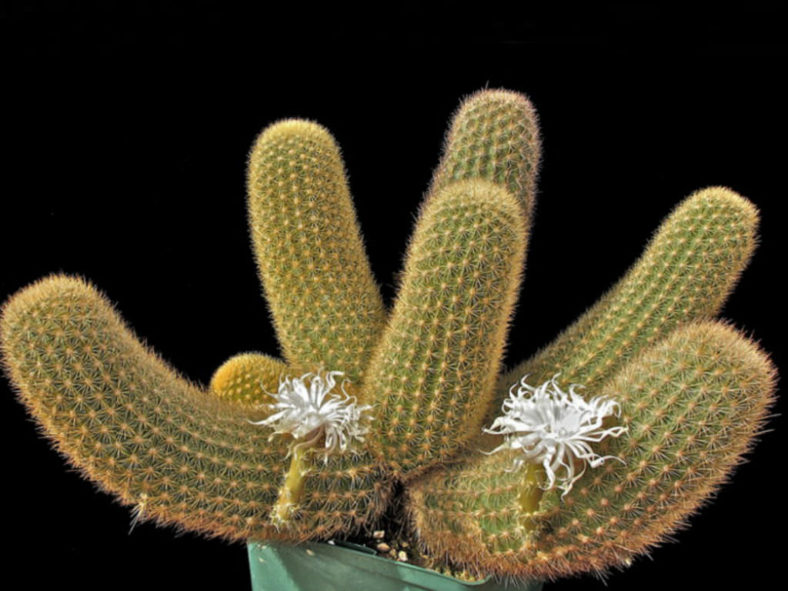Scientific Name
Brachycereus nesioticus (K.Schum. ex B.L.Rob.) Backeb.
Common Name(s)
Lava Cactus
Synonym(s)
Cereus nesioticus
Scientific Classification
Family: Cactaceae
Subfamily: Cactoideae
Tribe: Trichocereeae
Genus: Brachycereus
Description
Brachycereus nesioticus is a clump-forming cactus with yellow cylindrical stems with green or brown tones. The stems have 16 to 22 ribs and can grow up to 2 feet (60 cm) tall. The spines are up to 2 inches (5 cm) long, initially yellowish, becoming darker with age. Each areole bears up to 40 spines.
The flowers are narrowly funnel-shaped, with many spines on the lower part, and measure up to 4.4 inches (11 cm) long and 2.2 inches (5.5 cm) in diameter. They are white to yellowish-white inside and open in the daytime. The fruits are red to brown, covered with yellow spines, and filled with many black seeds.

Hardiness
USDA hardiness zones 10a to 11b: from 30 °F (−1.1 °C) to 50 °F (+10 °C).
How to Grow and Care
Like most cacti, Cereus are fairly low-maintenance and hardy. Ensure they receive enough water without becoming waterlogged, especially during the summer, and fertilize them for the best results. If the roots have become black or overly soft, the cactus could be experiencing root rot. Cut away the affected parts and replant. Most gardeners interested in cacti should be able to cultivate these without much problem.
It may become necessary to repot your Cereus if it outgrows its container. If so, ensure the soil is dry and then remove the pot. Knock away old soil, prune away any rotted or dead roots, then replace it in a new pot and backfill it with new soil. Ensure not to overwater cacti planted in new pots, as this can lead to root rot. It should be left dry for about a week and then watered lightly.
These cacti propagate quite easily from cuttings. Simply sever a branch and replant in moist, well-drained soil.
See more at How to Grow and Care for Cereus.
Origin
Brachycereus nesioticus is endemic to the Galapagos Islands. It colonizes lava fields, hence its common name, forming spiny clumps.
Links
- Back to genus Brachycereus
- Succupedia: Browse succulents by Scientific Name, Common Name, Genus, Family, USDA Hardiness Zone, Origin, or cacti by Genus
Photo Gallery
Click on a photo to see a larger version.


